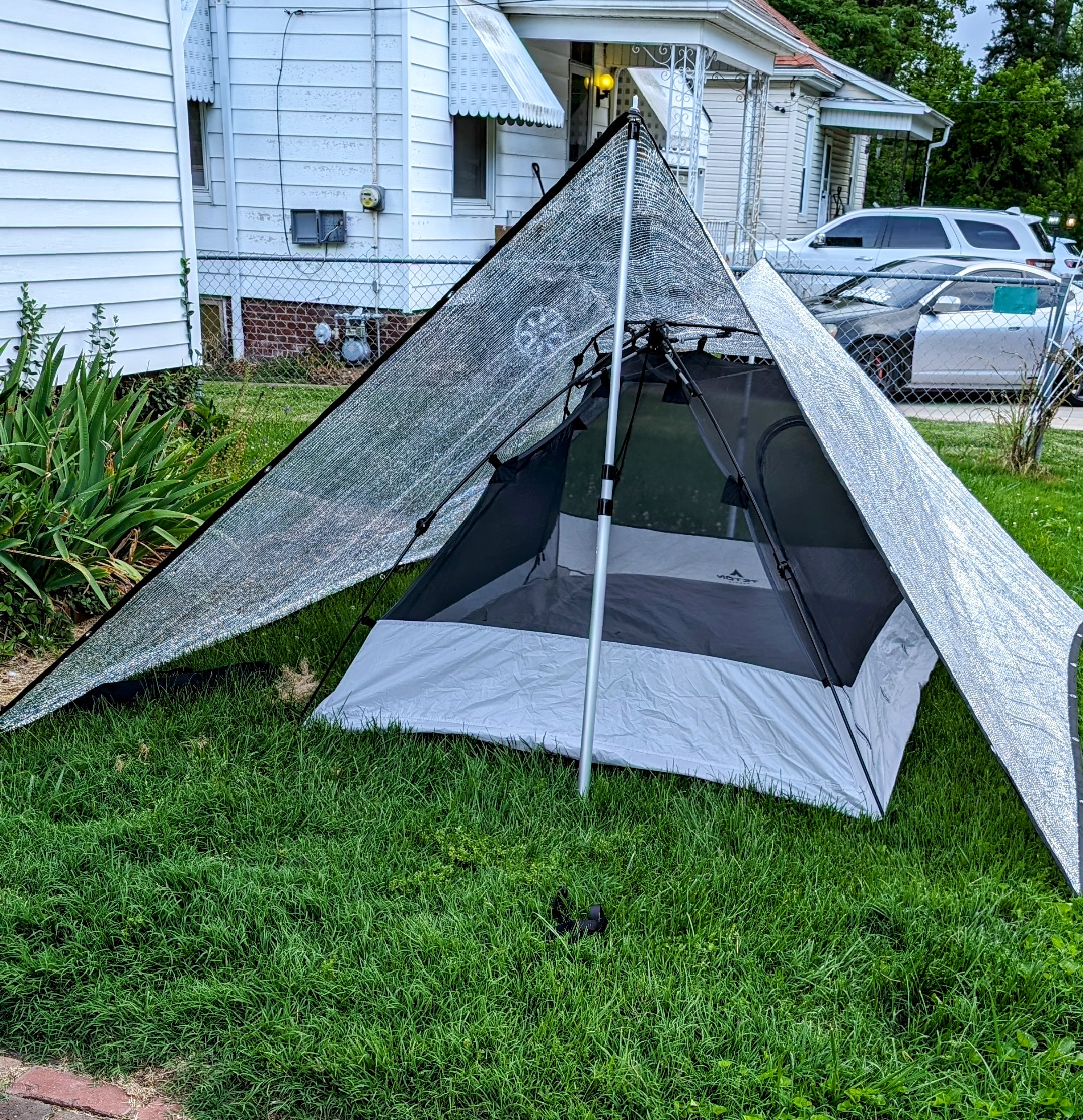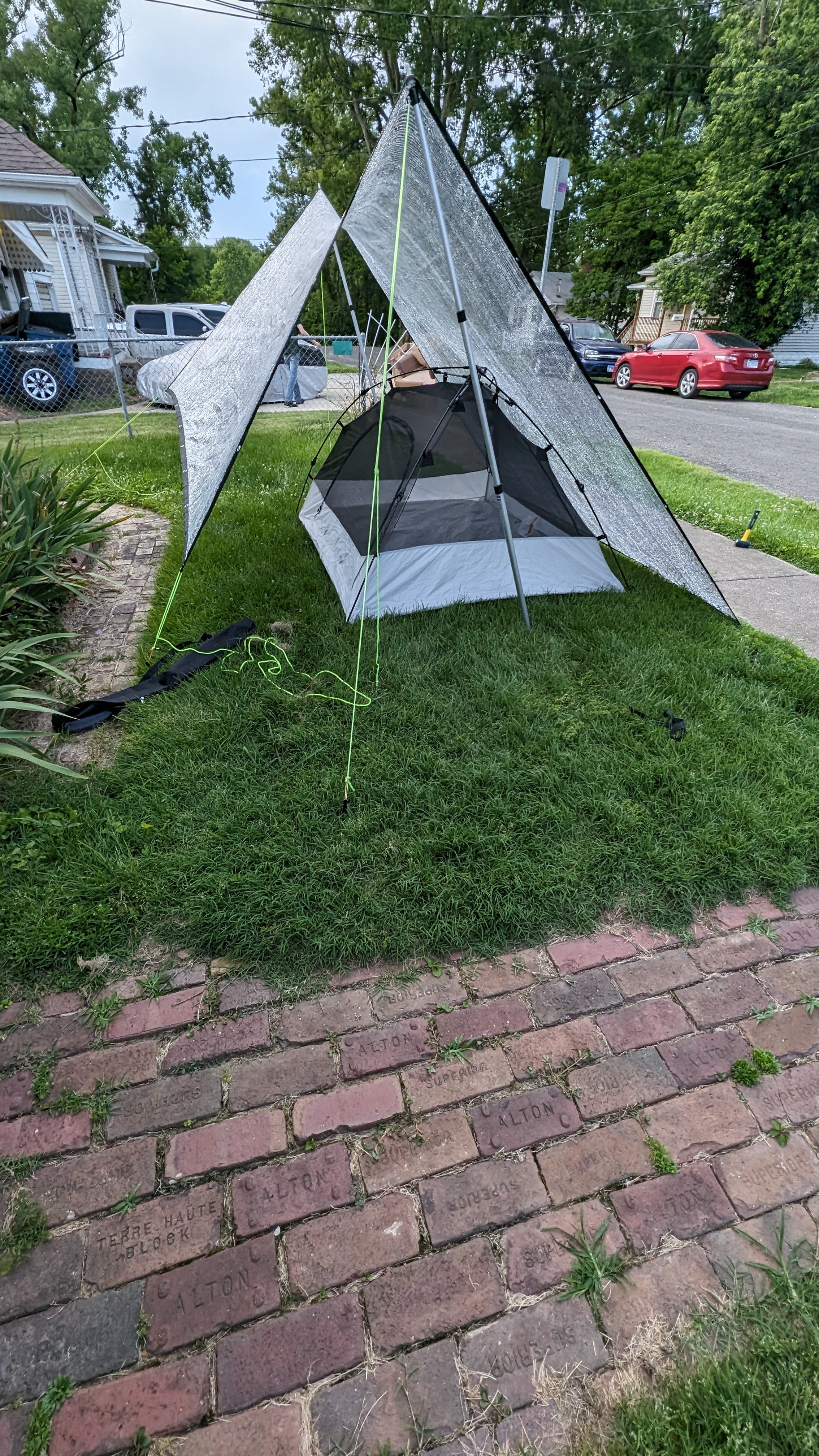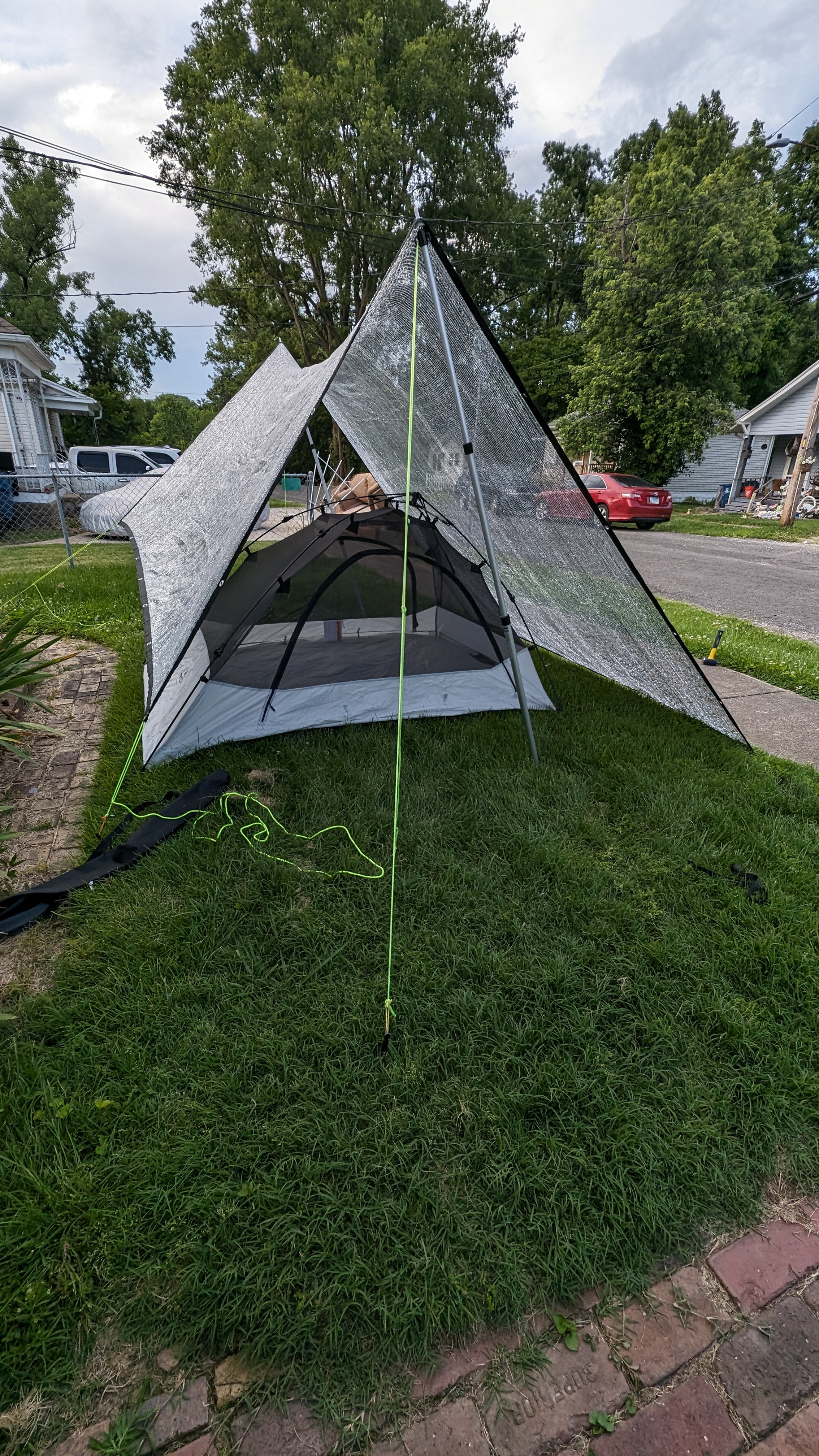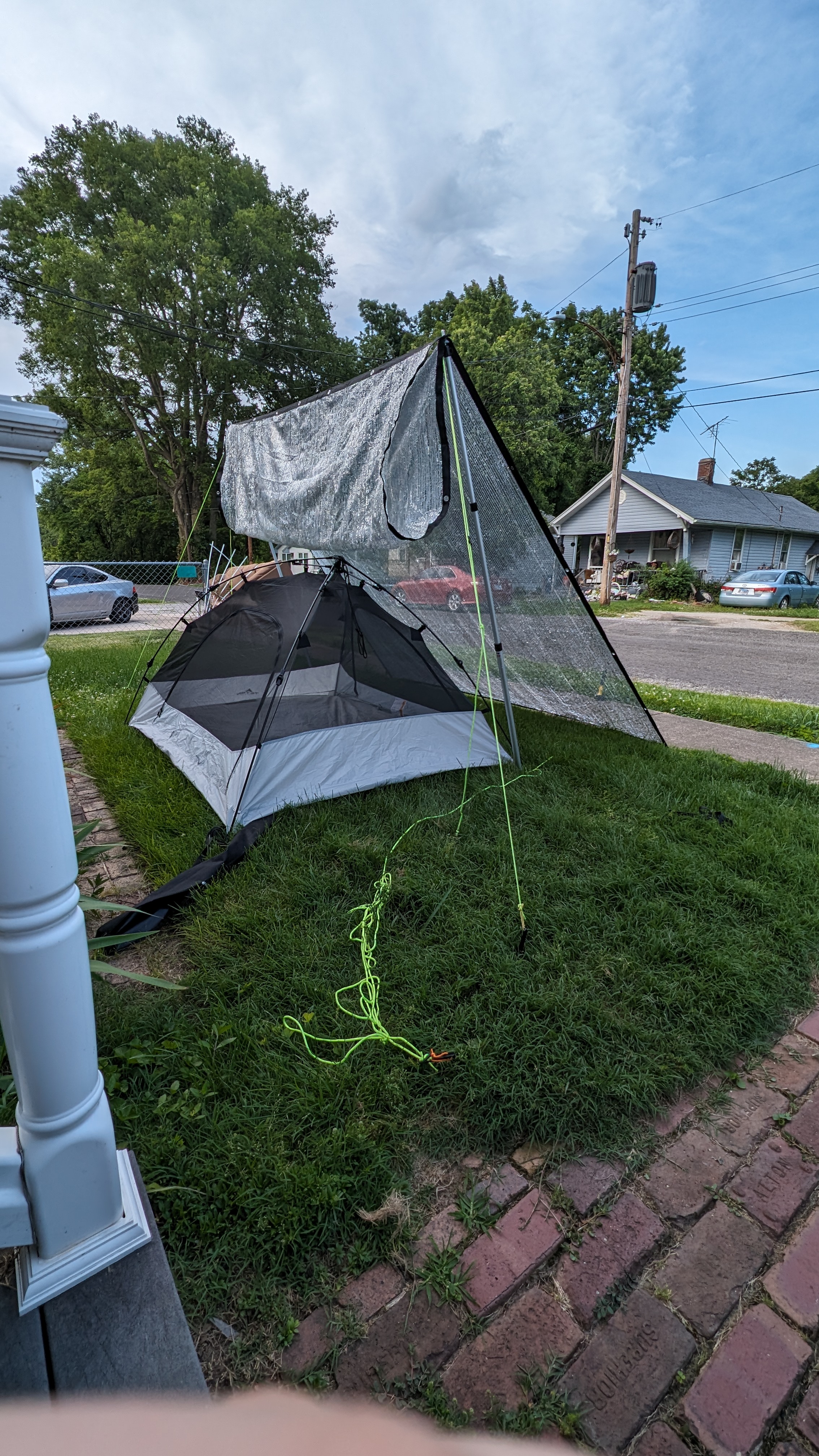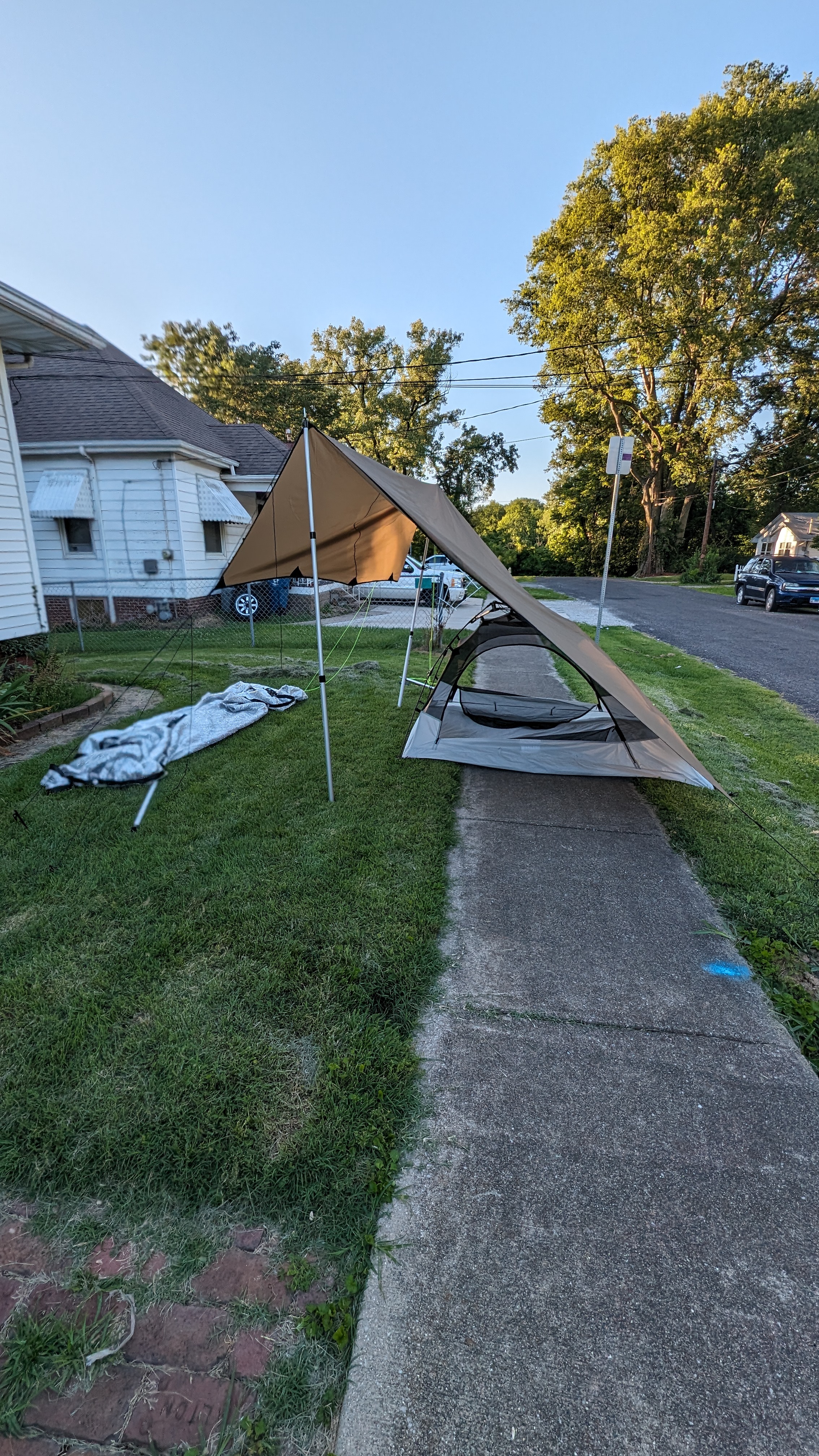Some people at a music festival like to stay up all night, go hard, and function off of a few hours worth of naps throughout the entire weekend. I am not one of those people.
I like getting quality rest so I can wake up and have fun the next day. The sun, however, sometimes has other plans. This article will teach you the basics to keeping your sleep and lounge areas cool and allow you to get a few extra hours of sleep each morning.
The two fundamentals
The main concepts to know here are: shade and airflow.
Shade
The amount of people I’ve seen camping in the middle of a field in a 3-season tent in 90F+ weather is… well it’s way too high. There’s not a tree in sight, and as soon as the sun comes over the horizon it is staring into the depths of your soul. The solution? “Throwing shade”.
What happens to a standard, 3-season tent in direct sunlight is the following: the outer material of the tent blocks the direct sunlight (casting shade), but the tent material (being non-reflective) absorbs that energy. The material then radiates that energy back out into the air, essentially creating an inefficient oven. You attempt to sleep in that oven, and the experience is miserable.
To avoid this situation, simply put something between the sun and your tent. An “EZ-Up” canopy, a tarp, a car, or a wall would all work wonders. If you want to block the morning sun, place your barrier to the east of your tent. If you want to shade your lounge area for daytime, place your barrier overhead and/or to the south (if you live at a mid-northern latitude).
Airflow
Increased airflow generally reduces temperature. Where airflow comes into play is in material selection for your shade. Some materials (tarps, cars, walls) do not allow air to pass through them. Some materials do (shade cloth, aluminet). You must evaluate your needs and local weather patterns to determine what material will work best for you.
Shade Options
EZ-Up Canopy
A staple in the festival scene, an EZ-Up canopy is a quick and simple way to provide shade. The top material is solid, casting quality shade. There are typically no walls included (but can be purchased or created), so airflow is not impeded.
Pros
- Quick to set up
- Good shade
- Rain protection as well
- Not prohibitively expensive
Cons
- Not made for severe weather
- Dangerous in high winds (ever seen one fly through the air?)
- Not the cheapest option
- Heavy
- Large
My opinion: these are alright. I don’t use them anymore, but I did in the past. If a single piece of the frame gets bent during high winds, consider the canopy ruined. They’re easy to buy and setup, but people don’t bother to properly stake them down. A storm comes along, and suddenly your canopy is flying.
I’ve seen canopy legs impale a windshield. I’ve had a storm rip my canopy out of my hands and flip it upside down on top of my neighbors’ tent, ruining their weekend. If you use these, learn to stake.
Note: I do still have/use a canopy, but it is a Clam canopy with fiberglass poles and built to withstand high winds.
A Car
At a car-camping festival, sometimes you can strategically park so your car is on the east side of your tent. That alone might block the sun. If not, attach a tarp to the roof and run it over the top of your tent.
Pros
- Easy
Cons
- You may need luck and/or a big car
A Silver Tarp
This is an easy way to redirect sunlight away from your shelter. Throw a silver tarp over it. You may not even need an air-gap. A reflective material laying on top of your tent will reflect the sunlight and prevent the material from absorbing the energy.
Pros
- Easy
- Cheap ($10-20?)
Cons
- Poor airflow
A Tarp and Poles
This is even better, not that difficult, and a staple in the camping world. Get a tarp, 2-4 poles, some guy lines, and a handful of tent stakes. Build a diagonal wall or an A-frame over/beside your shelter.
Pros
- Effective
- Rain protection as well
- Cheaper than an EZ-Up
- Less prone to breaking than an EZ-Up
- Flexibility in setup
Cons
- Requires some skill/practice
- Will probably block some airflow (unless you can predict which direction the wind will blow)
- Takes longer to setup than an EZ-Up
Aluminet and Poles
Aluminet is a highly reflective aluminized shade cloth that provides high quality shade. It also allows air to pass through it.
Do the same thing as the tarp + poles idea and you will have an effective shade structure. It won’t protect you from rain though.
Pros
- Extremely effective
- Doesn’t impede airflow
- Lightweight
Cons
- Not the cheapest option
- Requires some skill
- No rain protection
- Cheap Amazon Aluminet’s have low quality edges and grommets; they will rip in serious winds
My opinion: this is what I use. I combine a small, screened-tent (with detachable rainfly) with an aluminet. Plenty of airflow and still blocks the sun.
Examples
